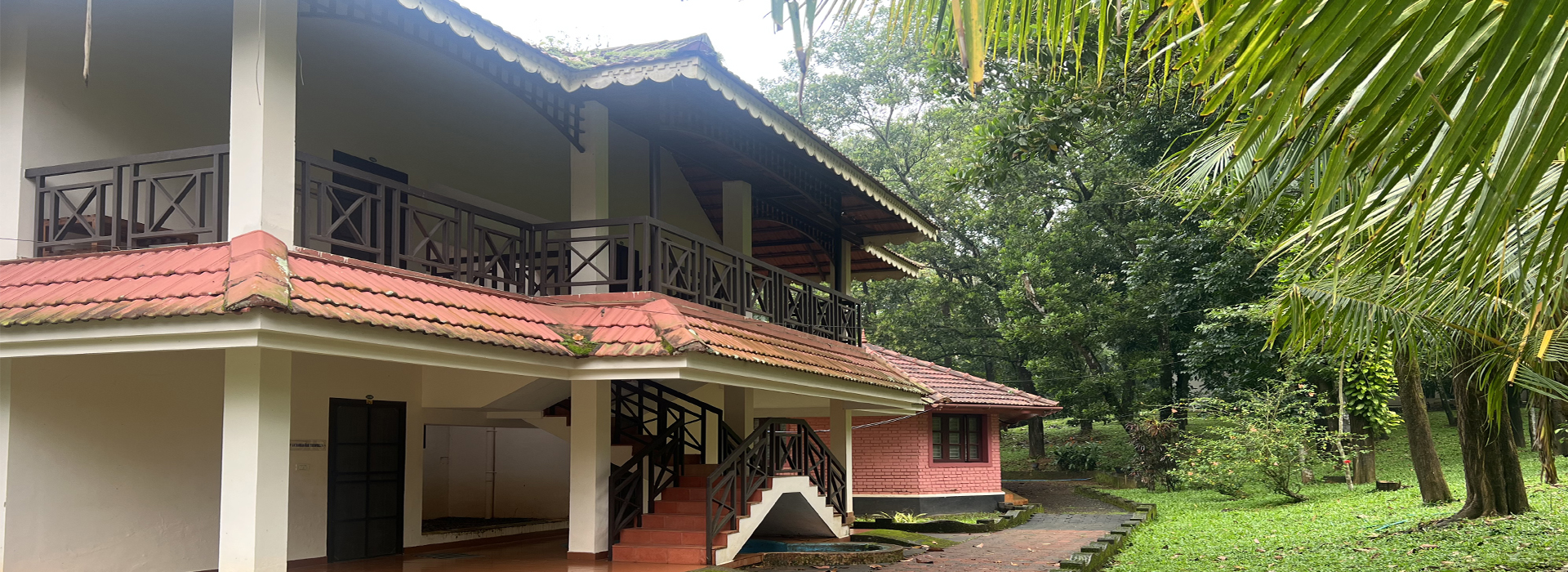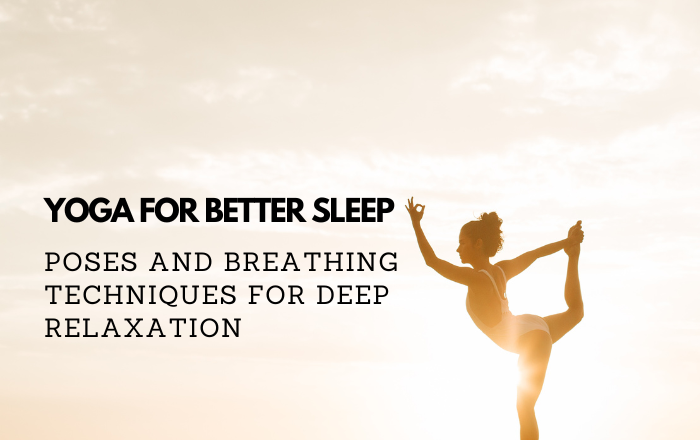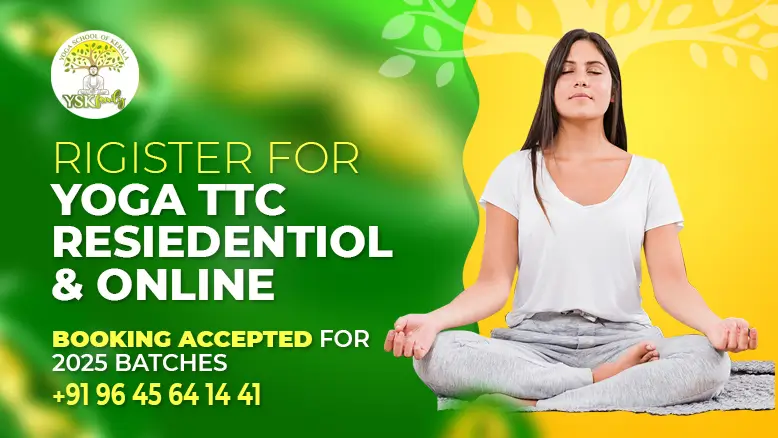
Blog

Blog
In today's fast-paced world, many people struggle with falling asleep or staying asleep throughout the night. Factors such as stress, anxiety and screen exposure contribute to sleep disturbances, leading to fatigue, irritability and decreased productivity. Yoga, an ancient practice rooted in mindfulness and relaxation, offers a natural remedy for sleep issues. By incorporating specific poses and breathing techniques into your nightly routine, you can create a sense of calm, release tension and promote deep relaxation for a restful night's sleep.
The Connection Between Yoga and Sleep
Yoga helps regulate the nervous system, reducing stress and promoting relaxation. It enhances melatonin production, the hormone responsible for regulating sleep-wake cycles and improves overall sleep quality. Studies have shown that regular yoga practice can reduce insomnia symptoms, enhance deep sleep stages and decrease nighttime awakenings.
Best Yoga Poses for Better Sleep
The following yoga poses are designed to relax the body, calm the mind, and prepare you for a restful night’s sleep. Practicing them 30 minutes before bedtime can help you transition from a busy day to a peaceful slumber.
1. Child’s Pose (Balasana)
How to do it:
-
Kneel on the floor with your big toes touching and knees apart.
-
Sit back onto your heels and stretch your arms forward, resting your forehead on the mat.
-
Take slow, deep breaths and allow your body to relax.
Benefits:
-
Releases tension in the back, shoulders, and neck.
-
Calms the nervous system and promotes relaxation.
-
Encourages slow, deep breathing.
2. Legs Up the Wall (Viparita Karani)
How to do it:
-
Sit close to a wall and lie on your back, extending your legs up against the wall.
-
Adjust your hips so they are as close to the wall as comfortable.
-
Rest your arms at your sides, palms facing up, and breathe deeply.
Benefits:
-
Reduces stress and anxiety.
-
Enhances circulation and relieves leg fatigue.
-
Encourages a sense of deep relaxation.
3. Reclining Butterfly Pose (Supta Baddha Konasana)
How to do it:
-
Lie on your back and bring the soles of your feet together, letting your knees fall open.
-
Place your hands on your belly or at your sides, palms up.
-
Breathe deeply and relax into the pose.
Benefits:
-
Opens the hips and releases tension.
-
Calms the mind and reduces stress.
-
Promotes deep, diaphragmatic breathing.
4. Seated Forward Bend (Paschimottanasana)
How to do it:
-
Sit with your legs extended in front of you.
-
Inhale, lengthen your spine, and exhale as you fold forward, reaching for your feet or shins.
-
Hold the pose and breathe deeply.
Benefits:
-
Stretches the back and hamstrings.
-
Relieves stress and quiets the mind.
-
Encourages introspection and relaxation.
5. Corpse Pose (Savasana)
How to do it:
-
Lie flat on your back with your legs slightly apart and arms relaxed at your sides.
-
Close your eyes and focus on deep, rhythmic breathing.
-
Stay in this pose for 5–10 minutes.
Benefits:
-
Induces a deep state of relaxation.
-
Helps in letting go of the day's stress.
-
Prepares the mind and body for sleep.
Breathing Techniques for Deep Relaxation
Breathing techniques, or Pranayama, play a crucial role in promoting relaxation and preparing the body for sleep. These techniques slow down the heart rate, calm the mind and reduce anxiety.
1. 4-7-8 Breathing
How to do it:
-
Inhale through your nose for a count of 4.
-
Hold your breath for a count of 7.
-
Exhale slowly through your mouth for a count of 8.
-
Repeat for 4–6 rounds.
Benefits:
-
Reduces stress and anxiety.
-
Lowers heart rate and blood pressure.
-
Prepares the mind for sleep.
2. Alternate Nostril Breathing (Nadi Shodhana)
How to do it:
-
Sit comfortably with a straight spine.
-
Use your thumb to close your right nostril and inhale through your left nostril.
-
Close your left nostril with your ring finger and exhale through your right nostril.
-
Inhale through your right nostril, then switch and exhale through your left nostril.
-
Continue for 5–10 minutes.
Benefits:
-
Balances the nervous system.
-
Reduces stress and promotes relaxation.
-
Clears the mind and enhances focus.
3. Ocean Breath (Ujjayi Pranayama)
How to do it:
-
Inhale deeply through your nose, slightly constricting your throat.
-
Exhale slowly through your nose while maintaining the throat constriction, creating a soft ocean-like sound.
-
Continue for 5–10 minutes.
Benefits:
-
Induces a deep sense of calm.
-
Helps regulate breathing and quiet the mind.
-
Reduces insomnia and anxiety.
Creating a Yoga Bedtime Routine
To experience the full benefits of yoga for sleep, consistency is key. Follow this simple routine every night:
-
Dim the lights and create a peaceful environment.
-
Perform 10–15 minutes of gentle yoga poses to release physical tension.
-
Practice 5–10 minutes of breathing exercises to calm the mind.
-
Lie in Savasana for a few minutes to fully relax.
-
Disconnect from screens at least 30 minutes before bed to avoid blue light exposure.
Yoga is a powerful tool for improving sleep quality naturally. By incorporating gentle poses and breathing techniques into your nightly routine, you can reduce stress, relax your body and set the stage for deep, restorative sleep. Whether you struggle with occasional sleeplessness or chronic insomnia, a dedicated yoga practice can transform your sleep and overall well-being. Try these techniques tonight and embrace the tranquility that yoga offers. Join Yoga School of Kerala for the best yoga classes that blend traditional wisdom with modern techniques to enhance your physical, mental and spiritual well-being. Whether you're looking to improve flexibility, reduce stress or deepen your yoga practice, our classes cater to all levels. Experience authentic yoga in a serene environment and embark on a path to holistic wellness with Yoga School of Kerala today!


